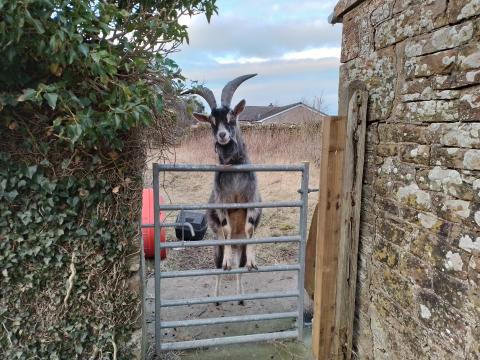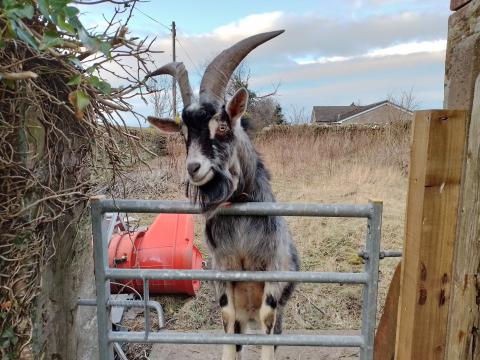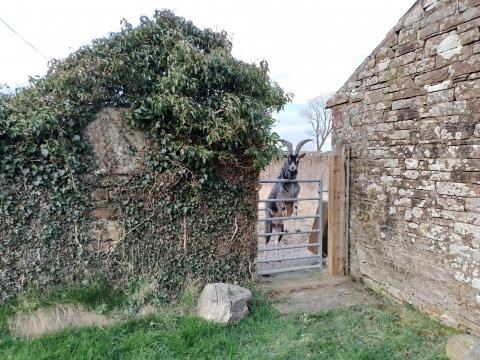Bolton Low Houses: Goats & Graves

KP and I recently called at Bolton Low Houses, a small village in Allerdale, Cumberland. We were seeking an eighteenth-century Quaker burial ground, which was not altogether straight forward. There is usually little to see at such places, the old Friends eschewing headstones and other ornamentation. Still, we enjoy gaining entry, but on this occasion, we failed to even try the gate. A big billy goat stared at us from the other side, his forelegs resting on the fourth bar. He may have been a friendly old goat, or he might have been guardian of the graves, positioned to protect the site from curious ministers of the gospel. Either way, he was not a chap with whom we wished to parley. We took our photographs and then our leave.

We called at other burial sites that day, which were chiefly populated by sheep. The Lord Jesus speaks of both sheep and goats in His famous parable of that name in the 25th of Matthew. The one pictures believers known by their actions, the other unbelievers exposed for their inaction. The grave is a great hiding place for the dead; to it they take their secrets and bury their thoughts. Yet though they are concealed there, the resurrection of the dead will be a great exposure. False believers, pretend Christians and empty professors shall be exposed for the goats they were, while the quiet sheep who loved their Lord and blessed His folk will be owned as His, before a watching world.
Which animal best befits your own graveyard? A hoary old goat, or a gentle, grazing sheep?
“Then they also will answer Him, saying, ‘Lord, when did we see You hungry or thirsty or a stranger or naked or sick or in prison, and did not minister to You?’ Then He will answer them, saying, ‘Assuredly, I say to you, inasmuch as you did not do it to one of the least of these, you did not do it to Me.’ And these will go away into everlasting punishment, but the righteous into eternal life.”
Matthew 25:244-46

- Log in to post comments


 Sunday Worship 10.45am & 6.00pm
Sunday Worship 10.45am & 6.00pm